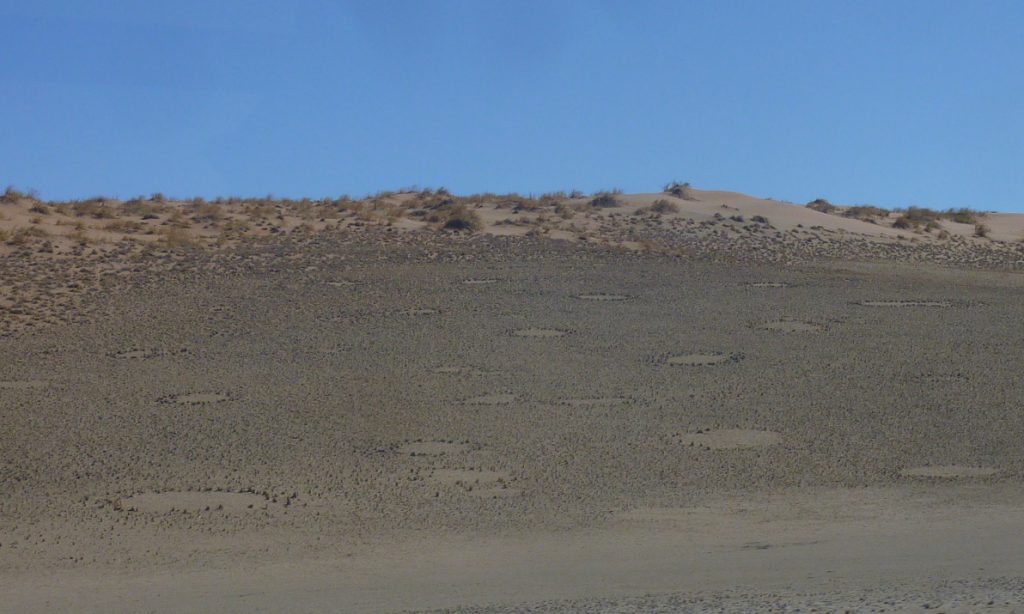If you ever wander about the barren lands of southern Africa, like the scarcely vegetated Namib desert in Namibia, you will most certainly stumble across a fascinating malformation of the soil called fairy circles. They are circle shaped bare patches of dry ground with a diameter of several meters enclosed by taller grass at the edge, compared to the steppe landscape of the surroundings.
Their origin has long been a cause of intense discussions. The earliest interpretation of their appearance may come from the Himba people, who share the legend that the circles are the footprints left behind by their ancestor Mukuru. Other stories tell of aliens, dragons or fairies.[1] On the other hand though, science suggests toxic gases or residues from already dead plants, radioactive elements or insects to be the origin of the features.[2] Lots of investigation have been made in the last decades to prove each theory but no one could come to a substantial and indisputable conclusion. Since no toxic or radioactive substances were found in the soil of the fairy circles, they must arise from something else.[2]
Supported by satellite images, Dr W. Tschinkel, from the Florida State University, was able to offer proof that the circles are not permanent. They grow and develop and after a lifespan of 41 years on average, they “die”.[3]
Cramer et al. used an empirical model considering various biological, chemical and weather factors to predict the appearance of fairy circles. They conclude that circle formation must be the result of plant organization and competition for nutrients since the plants at the periphery of the circles are more lush than the plants farther away.[4]
A very vivid explanation comes from N. Juergens who examined the termite population of fairy circles. The sand termite Psammotermes allocerus, their nest and tunnels were the only similarity found in 100 % of the investigated circles and even in young circles. Apparently they feed on plant roots and keep large areas free of water accumulating vegetation which causes also a higher water content in the ground centered beneath the circle.[5]
Only a few years ago, fairy circles were found in Pilbara, Australia similar to those in Africa. Getzin et al. doubt the dependence of the pattern formation from termites or ants since many circles didn’t host any of these insects. They blame pattern-creating plants in water-limited environments, such as in a desert, to be responsible.[6]
– Tatjana Daenzer
Read more:
[1] http://www.nytimes.com/2013/03/29/science/fairy-circles-in-africa-may-be-work-of-termites.html?_r=1
[2] van Rooyen, J. Arid Environ., 2004, 57, 467–485
[3] Tschinkel, PLOS ONE, 2012, 7, 1–17
[4] Cramer, PLOS ONE, 2013, 8, 1–12
[5] Juergens, Science, 2013, 339, 1618–1622
[6] Getzin, PNAS, 2016, 113, 3551–3556
